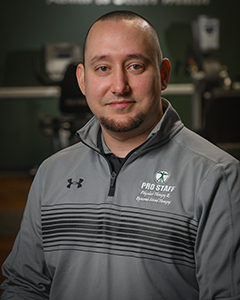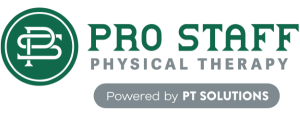What Does Doctor of Physical Therapy (DPT) Mean?

What does it mean to be a Doctor of Physical Therapy (DPT)? I recently spoke with future DPT intern Timothy O’Connor from Seton Hall University and asked him this question. He said that “it means that I have the knowledge and skills to gather all the information needed to treat each patient, regardless of what systems in the body are involved. A doctorate in physical therapy will also allow me to be competent in treating patients without reliance on other healthcare professionals.”
Timothy continued, remarking that the DPT distinction also greatly increases our autonomy as professionals. I couldn’t agree more. For example, though Pro Staff employs many individuals with DPTs to their name, my colleagues and I are responsible for formulating our own care plans that treat our patients’ conditions as well as establishing relationships with these individuals that foster a trusting environment. Our success is rooted in a combination of what we learned through academic programs and hands-on experience.
The University of Southern California initiated the first formal DPT program in the United States in 1992. However, this was created as a transitional program for established professionals. Creighton University followed in 1993 by establishing the first complete, entry-level DPT program. To become a DPT, physical therapists complete classes covering topics such as gross anatomy, embryology and genetics, neuroscience, biomechanics physiology, exercise physiology, pharmacology, and far more related to their practice. A DPT also completes on average 1,500 hours of clinical rotation within various settings that may include hospitals, rehabilitation facilities, outpatient facilities, school districts, sports teams, and home care agencies prior to graduating from an accredited institution.
Direct Access Benefits Patient and Provider
As the physical therapy profession grew, New Jersey lawmakers identified a problem for patients seeking treatment. Prior to 2003, a person needed to obtain a referral from a physician to see a physical therapist. That year, state lawmakers passed a public law that states an individual no longer requires this referral to seek treatment from a physical therapist, which is now known as Direct Access.
However, there are circumstances that physical therapists must consider before starting your initial evaluation. During your course of treatment, your physical therapist may refer you to a physician if you are not demonstrating progress or if they identify any potential “red flags.” Some of these red flags may include:
- Unexplained shortness of breath
- Chest pain or a feeling of heaviness
- Excessive redness and swelling in and around a joint
- Inability to put weight on an arm or leg
- Unexplained weight loss
- Unexplained changes with bladder or bowel patterns
If red flags such as these symptoms emerge during the initial evaluation or throughout the treatment process, most physical therapists will refer the patient to a physician for further examination. It is important to act with patients’ overall health and wellbeing in mind.
Learn More About DPT and Direct Access
Have any questions regarding a consultation or initial evaluation? Feel free to contact any Pro Staff Institute offices and we will be happy to assist you with requesting an appointment or providing more information.
Resources for further reading:
Enjoyed learning about DPT and Direct Access? Here’s more from Dr. Koc:
PRO STAFF LOCATIONS
OFFERING CERTIFIED
HAND THERAPY
Managing Diabetes: The Role of Physical Therapy
Managing Diabetes: The Role of Physical Therapy As of 2024, approximately 38.4 million Americans, or 11.6% of the U.S. population, have diabetes. Of these, 29.7 million cases are diagnosed, while an estimated 8.7 [...]
Staying Active and Injury-Free During Summer Activities
Staying Active and Injury-Free During Summer Activities Summer is a fantastic time to engage in outdoor sports and physical activities. Whether playing soccer, tennis, cycling, or jogging in the park, staying active is [...]
The Importance of Posture: How Proper Alignment Can Prevent Pain and Injury
The Importance of Posture: How Proper Alignment Can Prevent Pain and Injury In today's fast-paced world, where many hours are spent over desks, smartphones, and computers, posture is often neglected. Poor posture can [...]




